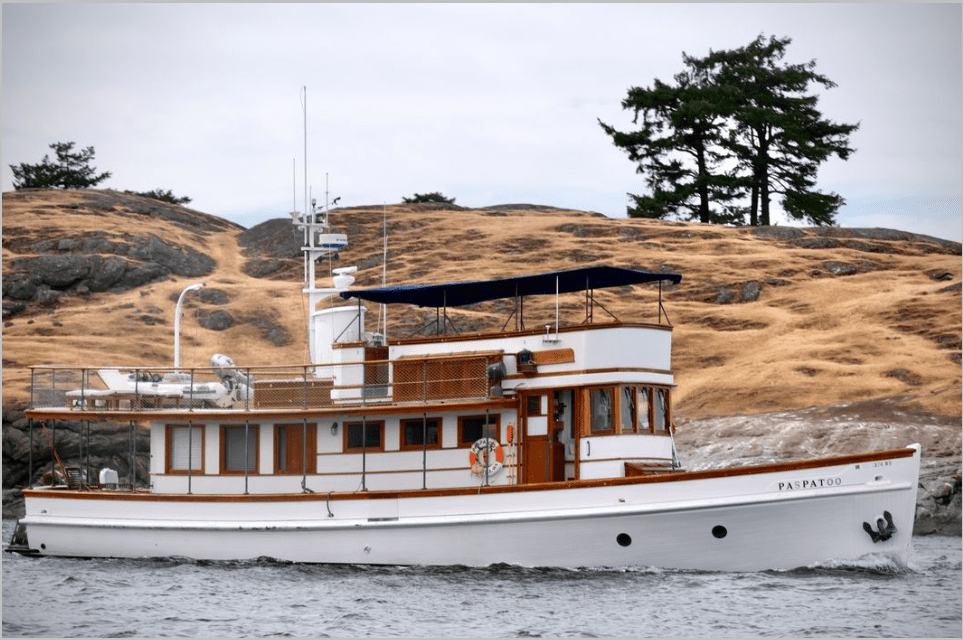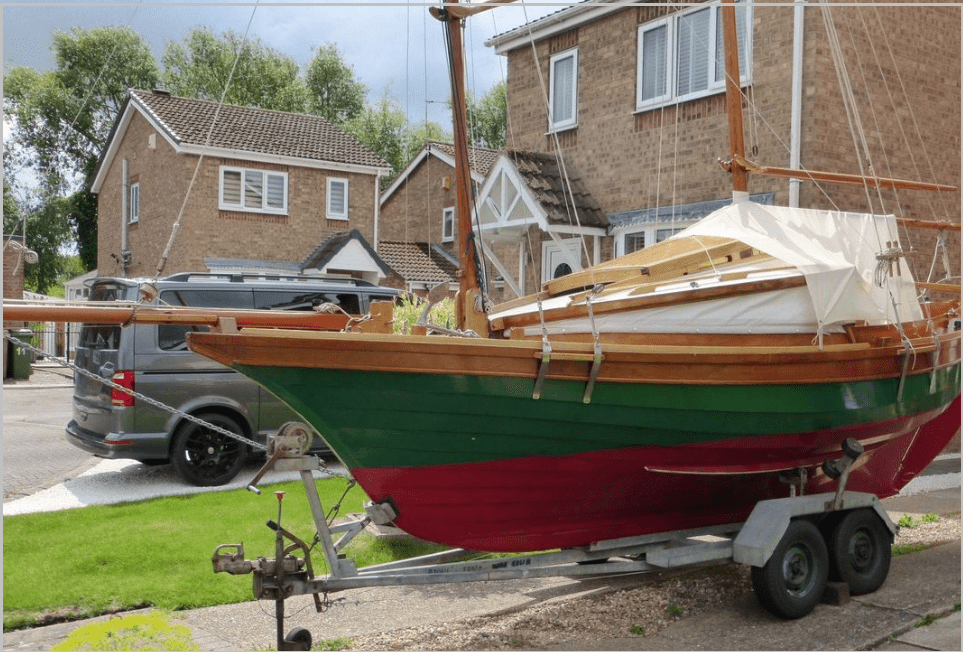The Fairey Huntsman 31 Classic Powerful Boat was a British diesel-powered frog craft used during World War II by the Royal Navy, Royal Air Force, and other Allied navies. It was developed from the Fairey Fox and its single-seat counterpart the 1977 Fairey Flametropper 31. Naval aviators flew the single-seater aircraft to provide support for fleet operations in areas inaccessible to fixed-wing aircraft. It could also be used as an attack or reconnaissance platform. Operators of the Fairey Huntsman 31 included the Royal Navy, Royal Air Force, and other Allied navies during World War II.
The UK government requisitioned merchant ships, minesweepers, and passenger liners to service our growing navy. These civilian vessels were known as Auxiliary Naval Forces (ANF) units in Britain’s navy. As such, the hunter-killer boat was known as an ANF unitMerryweather website In this article, we will cover everything you ever wanted to know about the Fairey Huntsman 31 including specifications, history, development, features, and specifications. We hope that this information has been helpful and you can learn something new about this fascinating piece of military history.

Specification of the Fairey Huntsman 31 Classic Powerful Boat
The Fairey Huntsman 31 Classic Powerful Boat was a British diesel-powered frog craft used during World War II by the Royal Navy, Royal Air Force, and other Allied navies.was a British diesel-powered hunter-killer boatused by the Royal Navy, Royal Air Force, and other Allied navies during World War II. Naval aviators flew the single-seater aircraft to provide support for fleet operations in areas inaccessible to fixed-wing aircraft. It could also be used as an attack or reconnaissance platform. The speed of the Fairey Huntsman 31 was in the region of 36-40 knots. The boat’s range was estimated at around 4,000 miles with a payload of 1,000 lbs.
The boat was powered by two Maybach HL 30/30 engines delivering 30 HP. The boat was armed with two 20 mm Oerlikon cannons. A third machine gun could be carried for defensive purposes. The fuselage was very robust and featured a clamshell design with a single-seat cabin and retractable landing gear. The cabin was large enough for two people and could accommodate up to four passengers in tandem or a single passenger on the flight deck.
Fairey Huntsman 31 Specs
| Engine Type | Inboard |
|---|---|
| Engine Make | Ford |
| Engine Model | Sabre Turbocharged |
| Fuel Type | Diesel |
| Power | 180 hp |
| Drive Type | Shaft Drive |
| Engine Location | Port |
| Propeller Type | 3 Blade |
| Propeller Material | Bronze |
| Engine usage (hours) | 630 |
| Engine Type | Inboard |
|---|---|
| Engine Make | Ford |
| Engine Model | Sabre Turbocharged |
| Fuel Type | Diesel |
| Power | 180 hp |
| Drive Type | Shaft Drive |
| Engine Location | Starboard |
| Propeller Type | 3 Blade |
| Propeller Material | Bronze |
| Engine usage (hours) | 630 |
History of the Fairey Huntsman 31 Classic Powerful Boat
The Fairey Huntsman 31 Classic Powerful Boat was a British diesel-powered frog craft used during World War II by the Royal Navy, Royal Air Force, and other Allied navies. was developed from the Fairey Fox and its single-seater counterpart the Fairey Flametropper 31. It was first flown in May 1942 and the first operational squadron was formed in August. The Fairey Huntsman 31 was used by the Royal Navy, Royal Air Force, and other Allied navies during World War II. Naval aviators used single-seater aircraft to provide support for fleet operations in areas inaccessible to fixed-wing aircraft. It could also be used as an attack or reconnaissance platform. The speed of the Fairey Huntsman 31 was in the region of 36-40 knots.
The range was estimated at around 4,000 miles with a payload of 1,000 lbs. The boat was powered by two Maybach HL 30/30 engines delivering 30 HP. The boat was armed with two 20 mm Oerlikon cannons. A third machine gun could be carried for defensive purposes. The fuselage was very robust and featured a clamshell design with a single-seat cabin and retractable landing gear. The cabin was large enough for two people and could accommodate up to four passengers in tandem or a single passenger on the flight deck.
Features of the Fairey Huntsman 31
The main feature of the Fairey Huntsman 31 was certainly its versatility. This was possible because of the boat’s design. The single-seater aircraft could be operated by one or two people. It could also be used as a utility or attack boat, depending on the circumstances. The single-seater aircraft could also be used as a helicopter, with the addition of a cabin for a pilot. The single-seater aircraft could also be used as a reconnaissance platform, using its cameras to photograph enemy coastlines and bases. The amphibious nature of the Fairey Huntsman 31 was one of its major advantages.
The single-seater aircraft took the place of a warship and could be deployed from a merchant ship or minesweeper, at short notice. The minesweepers were used to remove mines from the river and coastal waterways so that the single-seater aircraft could operate from dry land. The range was also an important factor with the single-seater and the amphibious variants, being approximately 4,000 miles. A single-seater aircraft, in this case, the Fairey Huntsman 31, would have excellent range and endurance.
The design of the single-seater aircraft was such that it could be easily converted into a helicopter, the Soester, which was a single-seater helicopter. Changes to the design of the single-seater aircraft were made to improve the airplane’s maneuverability, range, and endurance. Other features of the Fairey Huntsman 31 1977 included its wood and metal construction, folding wings, and shark-tooth skid undercarriage.
Development and specifications of the Fairey Huntsman 31
The 1977 Fairey Huntsman 31 was developed from the Fairey Fox and its single-seater counterpart the Fairey Flametropper 31. It was first flown in May 1942 and the first operational squadron was formed in August. The Fairey Huntsman 31 was used by the Royal Navy, Royal Air Force, and other Allied navies during World War II. Naval aviators used single-seater aircraft to provide support for fleet operations in areas inaccessible to fixed-wing aircraft. It could also be used as an attack or reconnaissance platform.
The speed of the Fairey Huntsman 31 was in the region of 36-40 knots. The range was estimated at around 4,000 miles with a payload of 1,000 lbs. The boat was powered by two Maybach HL 30/30 engines delivering 30 HP. The cabin was large enough for two people and could accommodate up to four passengers in tandem or a single passenger on the flight deck. The fuselage was very robust and featured a clamshell design with a single-seat cabin and retractable landing gear. The cabin was large enough for two people and could accommodate up to four passengers in tandem or a single passenger on the flight deck.
Other boats that were developed from the Fairey Huntsman 31
The well-known fishing boat, the TBF Avenger, also derived from the Fairey Fox, was developed from the Huntsman. The airplane was modified and named the Catapult Trainer, later renamed the Avenger. The Catapult Trainer was used as a training platform.







